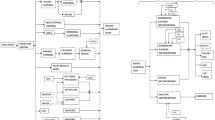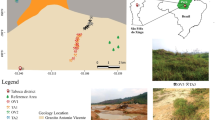Abstract
Recent discoveries have shown the presence of several shipwrecks and historical pieces submerged in the seacoast of the Yucatan Peninsula of Mexico. Within these remains, it is common to found objects manufactured in copper alloys that were part of the construction system of the vessel. For the present study, different surface analysis techniques were applied to tubular copper alloy objects collected in the wreck “El Tejas”. The metallographic study allowed us to know not only the microstructure but also features over its manufacturing technique, as an example of nineteenth-century handmade production. SEM, EDX and XRF techniques allowed us know the elemental composition and establish the mechanisms of degradation of the different copper alloys in the seabed and evaluated a preservation method that consist on removing chlorine compounds by cleaning with pressure steam of distilled water.
Similar content being viewed by others
References
R.V.J. Varman. IMF Marseilles or French pattern tile in Australia (The Australian Society for Historical Archaeology, University of Sidney, 2006).
J. M Radzikowsa. Metallography and Microstructures, ASM Handbook, Vol. 9. pp. 450 (2004).
W.D. Callister Jr. Introducción a la Ciencia e Ingeniería de los materiales. (Reverté, 2001) pp. 276.
M. R. Tomayo, A. Carvalho.Tecnología química. Vol. XXVIII. No. 2, pp. 90–98 (2008).
H. De Rosa, N. C. Ciarlo, H. Svoboda, F. D. Claudio. Caracterización de elementos metálicos de fijación hallados en sitios de naufragio (siglos XVII-XIX) de la costa atlántica argentina. III Congreso Argentino de Arqueometría & II Jornadas Nacionales para el Estudio de Bienes Culturales, Córdoba, 2009.
I. D. MacLeod, M. Pitrum. “Metallography of Copper and Its Alloys Recovered from 19th Century Shipwrecks” in Archaeometry: Australasian Studies, 121-130 (1988).
L. E. Florian. “Deterioration of Organic Materials other than Wood” in Conservation of marine archaeological objects, edited by E. Colin (Butterworths, 1987) pp. 21–54.
S. Díaz Martínez, E. García Alonso, Técnicas metodológicas aplicadas a la conservación-restauración del patrimonio metálico. (Ministerio de Cultura de España, 2011) pp. 7.
N.A. North, I.D. MacLeod, “Corrosion of Metals” in Conservation of marine archaeological objects, edited by E. Colin (Butterworths, 1987) pp. 68–98.
Author information
Authors and Affiliations
Corresponding author
Rights and permissions
About this article
Cite this article
Arano, D.E., Espinosa, Y., Barba, H. et al. Characterization and Evaluation of Salty Cleaning Compounds Study in Historic Objects made of Copper Alloys from the “El Tejas” Shipwreck. MRS Online Proceedings Library 1618, 247–253 (2014). https://doi.org/10.1557/opl.2014.474
Published:
Issue Date:
DOI: https://doi.org/10.1557/opl.2014.474




